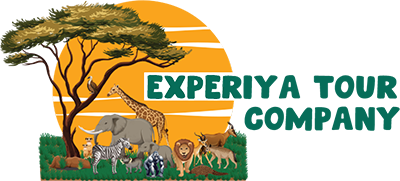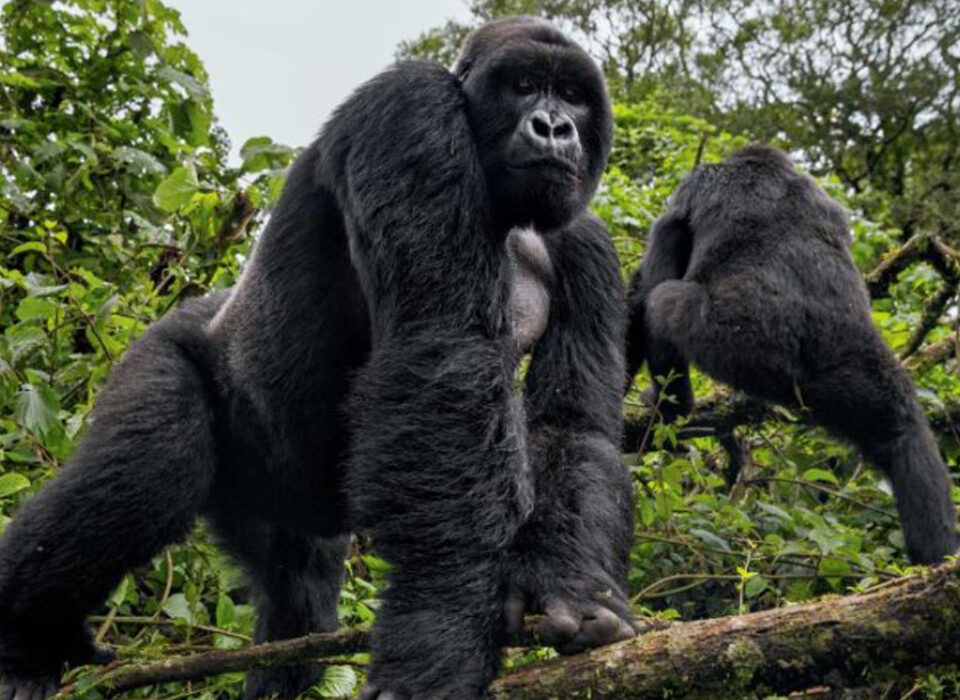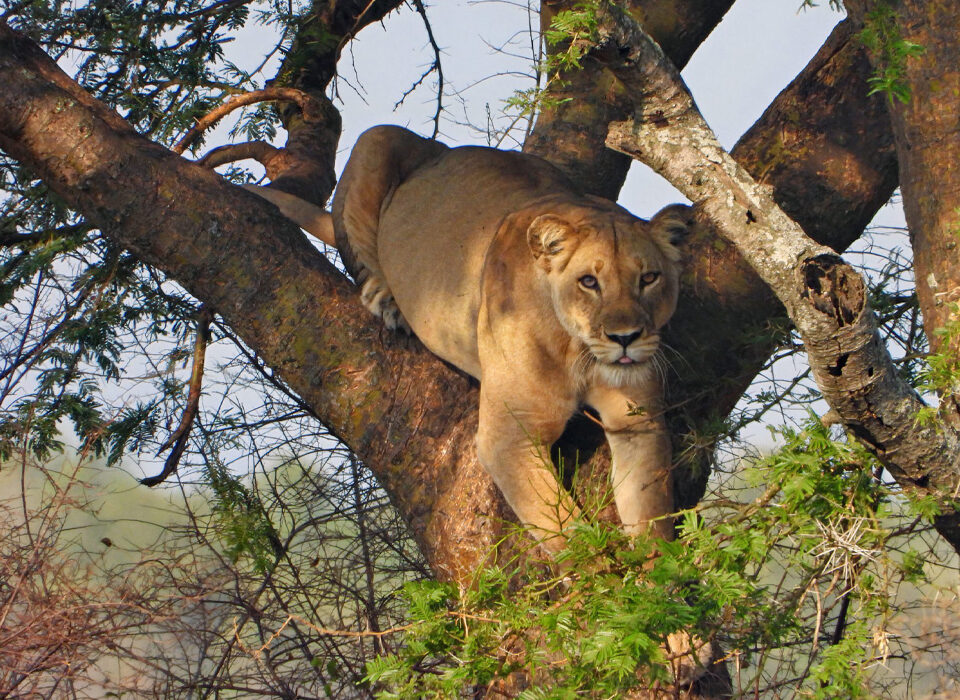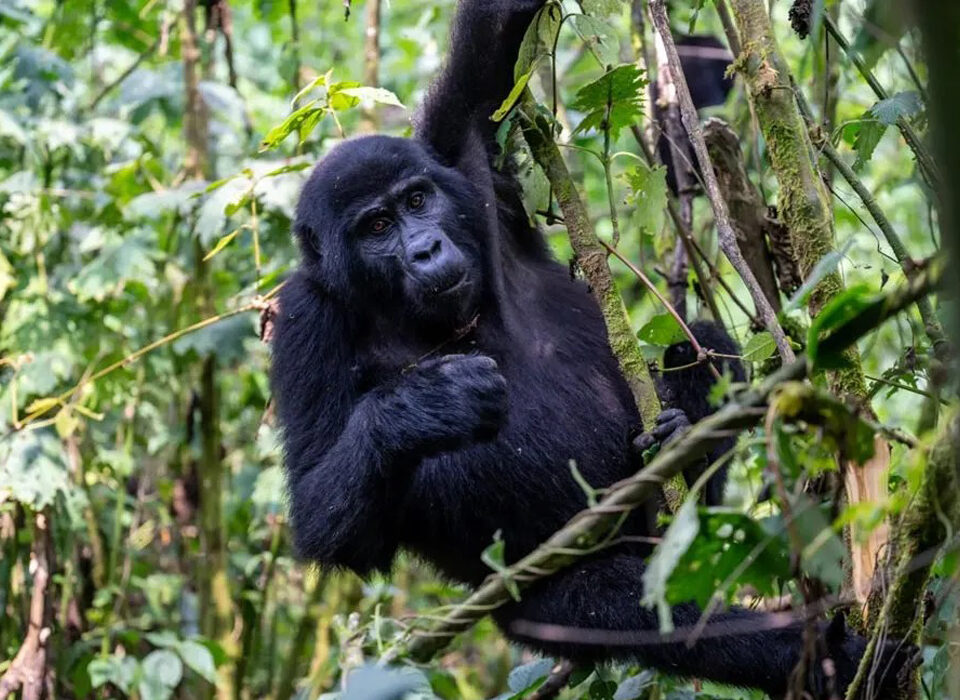- GET IN TOUCH WITH US:
- +256 753518160
- +256 777842166
- info@experiyatourcompany.com

Ultimate Safari Itinerary for Uganda and Rwanda Holidays
October 2, 2025
Gorilla Tracking Safari from Entebbe
October 2, 2025Can You Combine Lion and Leopard Tracking with Gorilla Trekking on a Uganda Safari?
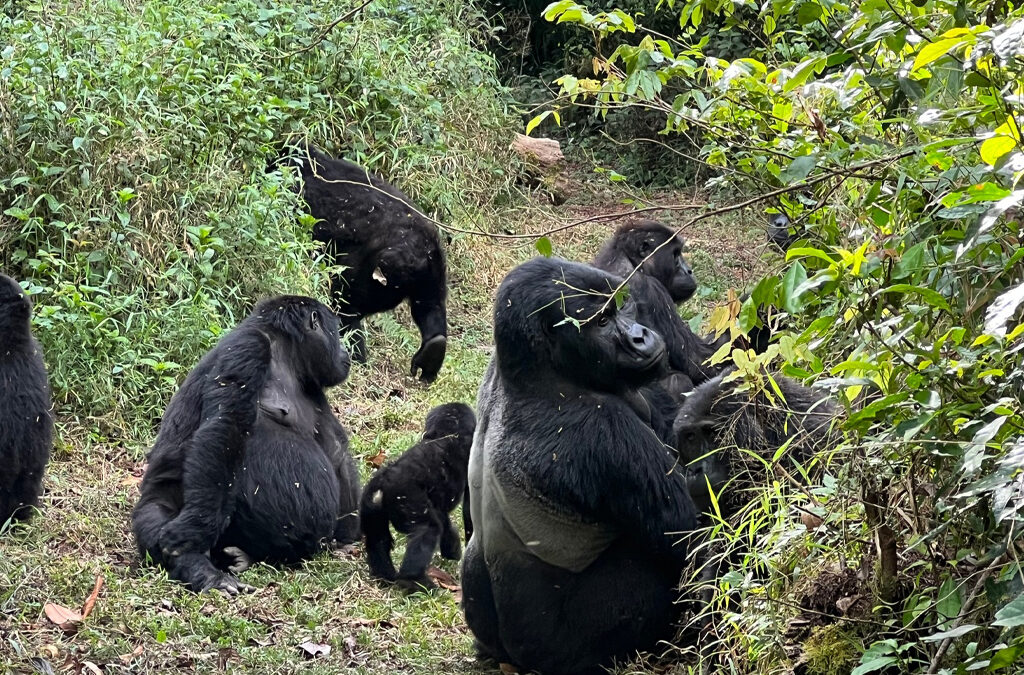
Yes—you absolutely can. In fact, this combination has become one of the most sought-after safari experiences in Uganda. By pairing lion and leopard tracking in Queen Elizabeth National Park with gorilla trekking in Bwindi Impenetrable National Park, travelers can witness Africa’s wildlife across two dramatically different ecosystems. One day you follow iconic big cats roaming open savannahs; the next, you venture into dense rainforest to observe endangered mountain gorillas up close. In just a few days, visitors experience both the thrill of the wild and intimate jungle encounters—creating the ultimate Ugandan safari adventure.
Gorilla Trekking in Bwindi Impenetrable National Park
Gorilla trekking is the highlight of Bwindi Impenetrable National Park. The park is divided into four main trekking sectors—Ruhija, Nkuringo, Rushaga, and Buhoma—each home to habituated gorilla families with distinct social behaviors. Currently, Bwindi hosts around 21 habituated gorilla groups.
Visitors are assigned to a specific gorilla family based on the sector where they booked their permit. This system ensures an organized, immersive experience while maximizing the chances of seeing these magnificent animals in their natural habitat.
You can secure gorilla trekking permits through reputable tour operators. Once your dates are confirmed, the operator purchases your permit and sends a copy via email. You must provide personal details, including a copy of your passport, to finalize the process.
Gorilla trekking permit fees:
- Foreign non-residents: $800
- Foreign residents: $700
- African citizens: $500
- East African citizens: UGX 300,000
These fees are regulated by the Uganda Wildlife Authority, and a valid permit is mandatory. Without it, you cannot access the gorillas.
Lion and Leopard Tracking in Queen Elizabeth National Park
Queen Elizabeth National Park offers one of the most exhilarating wildlife experiences in Uganda. Its diverse ecosystem supports over 95 mammal species and more than 600 bird species. The Ishasha Sector is famous for tree-climbing lions, while the entire park provides rare opportunities to track elusive leopards in the wild. Expert rangers guide visitors, sharing insights into the behavior, movements, and survival strategies of these majestic predators.
Lion Tracking
Lion tracking mainly takes place in the Kasenyi Sector. Here, visitors enjoy a research-based experience led by scientists and rangers. Early morning and late afternoon sessions allow participants to observe lion behavior, social structures, and daily movements.
Safari vehicles with pop-up roofs provide excellent viewing opportunities while limiting disturbance to the animals. By restricting the number of permits, the park ensures both a personal experience for visitors and accurate data collection for researchers.
Leopard Tracking
Tracking leopards adds another layer of excitement to the safari. You need a tracking permit, available in advance at the Mweya Information Centre:
- Foreign non-residents: $100
- Foreign residents: $80
- East African citizens: UGX 100,000
Leopards are primarily tracked in the morning when they are most active. Rangers often use radio collars on selected individuals to help locate them. Participants may drive off-road under ranger guidance, maximizing the chance of spotting these stealthy cats while ensuring safety. Seeing a leopard in its natural habitat is challenging—but the reward is unforgettable.
Sample Itinerary: Lion and Leopard Tracking Combined with Gorilla Trekking
Here’s a flexible six-day itinerary for combining big cat tracking with gorilla trekking:
Day 1: Arrive at Entebbe International Airport and transfer to Queen Elizabeth National Park. Stop at the Equator for photos before reaching your lodge. Enjoy an evening game drive to spot wildlife such as buffalo and antelopes, followed by dinner and overnight rest.
Day 2: Start with early morning lion tracking in the Kasenyi Sector, guided by researchers and rangers. After lunch at the lodge or in the field, take a relaxing boat cruise along the Kazinga Channel to observe animals and birds. Conclude with a guided nature walk, dinner, and overnight stay.
Day 3: Dedicate the morning to leopard tracking. After lunch, transfer to the Ishasha Sector, known for its tree-climbing lions, where you spend the evening before dinner and overnight stay.
Day 4: Drive four to five hours to Bwindi Impenetrable National Park. Check into accommodation in your assigned sector—Buhoma, Ruhija, Rushaga, or Nkuringo. Dinner and overnight at the lodge.
Day 5: Enjoy the highlight of the safari: gorilla trekking. After an early briefing, trek to your assigned gorilla family. Treks last two to six hours depending on the gorillas’ location, with one unforgettable hour spent in their presence. Return to headquarters for a trekking certificate and optionally join a community walk to learn about local culture. Dinner and overnight conclude the day.
Day 6: After breakfast, transfer back to Entebbe International Airport or onward destinations, marking the end of your extraordinary safari.
What to Pack
For this combined safari, wear neutral-colored clothing to blend into the environment. Long-sleeved shirts and lightweight trousers protect against sunburn and insect bites, while breathable tops keep you comfortable during big cat tracking.
In Bwindi, bring a waterproof jacket or poncho, and wear sturdy hiking boots. Running shoes are suitable for savannah tracking. Other essentials include:
- Wide-brimmed hat
- Sweaters for chilly mornings
- Socks to prevent blisters
- Gardening gloves
- Sunglasses
- Insect repellent
Best Time to Visit
Lion and leopard tracking, as well as gorilla trekking, are available year-round. However, the dry seasons—December to January and June to August—offer the best conditions. Thinner vegetation improves visibility, roads are easier to navigate, and trekking trails are more accessible. Book in advance, as permits for each activity are limited.
Combining lion and leopard tracking with gorilla trekking lets travelers experience the full diversity of Uganda’s wildlife in one seamless safari. Experiya Tour Company can handle all permits and logistics, ensuring your adventure flows smoothly from the open savannah to the misty rainforest.
